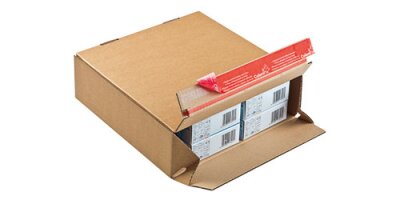All information about packaging laws and regulations
Packaging not only protects the product but also represents the brand identity and contributes to the customer experience. However, with a large company comes great responsibility, especially with regard to packaging laws and regulations. This blog post highlights the importance of complying with these rules, from consumer protection and environmental protection to maintaining competitiveness. Learn how legal requirements vary across different sectors such as food, hazardous materials, and cosmetics, and what specific requirements exist for material restrictions, labeling, recycling, and disposal.
Why are packaging laws and regulations important?
Laws and regulations for packaging and
packaging accessories are of great importance in modern economic life for various reasons. These regulations ensure that packaging materials and processes are produced in a way that benefits not only consumers but also the environment. A deeper understanding of these rules enables companies to make responsible choices while remaining competitive.
Consumer protection
Consumer protection is at the forefront of the importance of packaging laws. By setting standards for quality and safety, these laws ensure that contents reach the customer without health risks. For example, packaging in certain industries must be free from harmful substances to prevent harmful chemicals from transferring to products and being ingested by consumers. In addition to protecting consumer health, this also strengthens their trust in the products and brands they choose.
Environmental protection
Another aspect of packaging laws and regulations is
environmental protection. These regulations provide the framework for minimizing the ecological footprint of
shipping packaging. They encourage the use of recyclable and reusable materials and motivate companies to develop meaningful solutions that are both effective and environmentally friendly. This reduces the burden on the environment and increases resource efficiency.
Competitiveness and innovation
In addition, packaging laws and regulations play a crucial role in
promoting fair competition and innovation in the market. By providing clear guidelines and standards, they ensure that all companies in the market operate under the same rules. This prevents unfair competition and creates an incentive for companies to develop packaging that improves safety, functionality, and sustainability. And this, in turn, drives market success.
Basic requirements for packaging
-
Material restrictions: The choice of materials for cartons and cardboard boxes is also subject to legal restrictions. Specific substances classified as hazardous to health or the environment are strictly regulated or prohibited.
-
Labeling and marking: Proper labeling is important to ensure compliance with packaging regulations. This includes information such as recycling instructions, the material of the packaging, and, for food, ingredients, and allergens.
-
Recycling and disposal: The laws on recycling and disposal of packaging are designed to promote the circular economy. Companies are often required to participate in take-back and recycling programs.
Specific regulations by sector
Packaging laws and regulations vary greatly depending on the sector in which they are used. These sector-specific regulations ensure that the specific requirements and risks associated with different types of products are met. Here is a closer look at the individual regulations in the areas of food, hazardous materials, and cosmetics.
Food packaging
The
packaging of food is subject to particularly stringent regulations because it directly affects the safety and health of customers. These regulations ensure that no harmful substances are released to the food during the
shipping of food and beverages. Additionally, these rules protect food from contamination and provide clear information about nutritional value, ingredients, and possible allergens. Furthermore, food packaging must be produced in such a way that it extends the shelf life of the products and maintains their freshness without using environmentally harmful substances.
Hazardous materials packaging
These regulations for
hazardous materials packaging ensure that hazardous materials are safely packaged during storage, transport, and handling to prevent accidents. Requirements include the integrity and strength of the
hazardous materials packaging, labeling with special warnings, and compliance with international standards for transporting specific goods. The
hazardous materials cartons must also undergo continuous testing and certification to ensure their suitability for the respective hazardous material classes.
Cosmetic packaging
Cosmetic packaging regulations address the safety of the materials used, the prevention of contamination, and the proper labeling of products. The printing must include clear information about usage instructions, ingredients, and shelf life. Additionally, the environmental impact of cosmetic packaging should be minimized by reducing packaging waste and promoting the use of recyclable materials.
The BOXXCO recommendation
Compliance with packaging laws and regulations is an important part of business operations. Companies that recognize the importance of these regulations and take proactive steps to comply can not only avoid legal consequences but also strengthen their brand and promote sustainability. At BOXXCO, we not only provide our customers with high-quality packaging solutions but also act as advisors on all questions of packaging compliance.








































































































